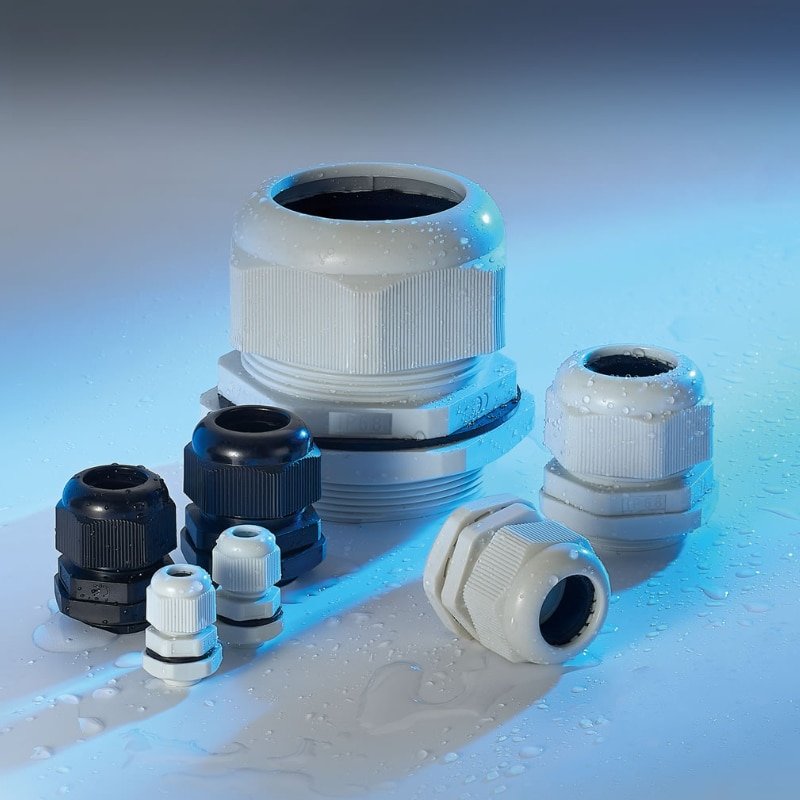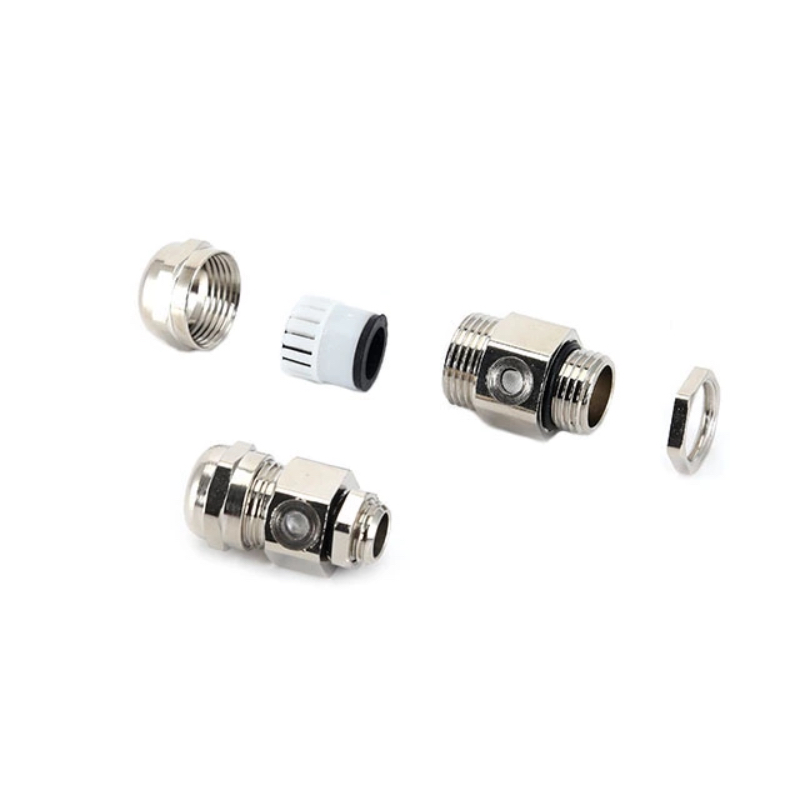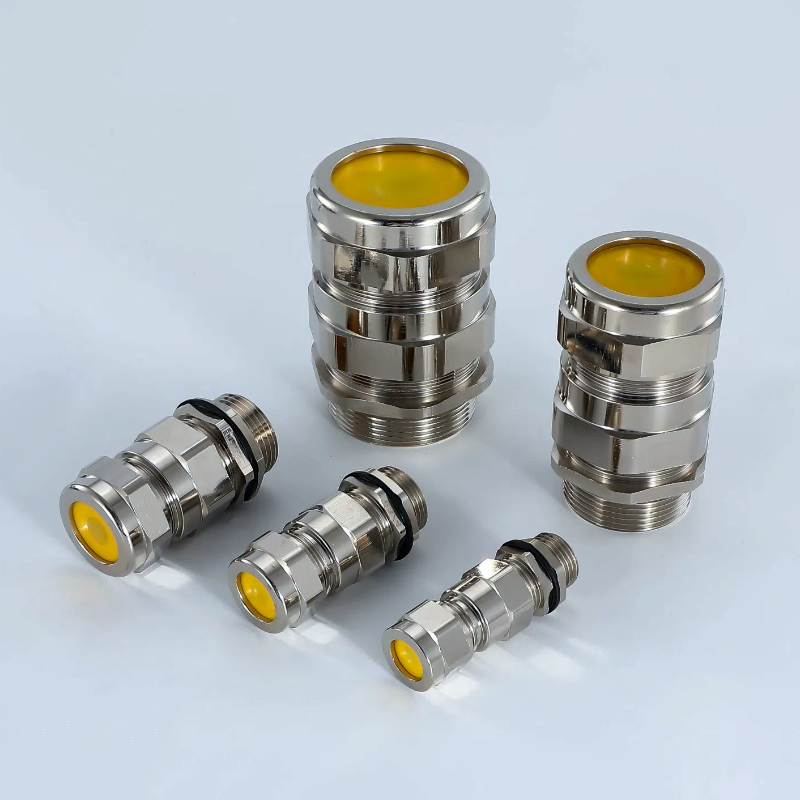Staring at confusing cable gland part numbers? Frustrated by cryptic codes that seem impossible to decode? You’re wasting precious time on something that should be simple.
Cable gland part numbers follow standardized formats indicating thread size, cable diameter, material type, and certifications – mastering this system eliminates ordering errors and speeds up procurement.
Last month, David from a major automotive supplier called me in panic. His production line was down because he’d ordered the wrong glands. After I taught him our decoding system, he became our go-to expert for his entire team 😉.
Table of Contents
- What Do Those Letters and Numbers Actually Mean?
- How Do You Match Thread Sizes to Your Application?
- Which Material Code Should You Choose for Your Environment?
- What Certifications Do You Really Need?
What Do Those Letters and Numbers Actually Mean?
Ever wondered why a simple cable gland has such a complex part number like “PG16-NY-BK-IP68”?
Each segment of a cable gland part number represents specific technical specifications: thread type, size, material, color, and protection rating – understanding this structure prevents 90% of ordering mistakes.
Let me break down the most common format we use at Bepto:
Standard Part Number Structure
| Position | Code Example | Meaning | Options |
|---|---|---|---|
| 1st | PG/M/NPT | Thread Type | PG (German), M (Metric), NPT (American) |
| 2nd | 16/20/25 | Thread Size | Diameter in millimeters |
| 3rd | NY/BR/SS | Material | NY (Nylon), BR (Brass), SS (Stainless Steel) |
| 4th | BK/GY/WH | Color | BK (Black), GY (Gray), WH (White) |
| 5th | IP68/IP67 | Protection Rating | Ingress Protection level |
Real-World Example Breakdown
Take “M20-NY-BK-IP68”:
- M20: Metric thread, 20mm diameter
- NY: Nylon material (polyamide)
- BK: Black color
- IP68: Dust-tight and waterproof protection
I remember Hassan, our petrochemical client, initially thought these codes were just random. Now he orders faster than most of our sales team can process! The key is recognizing the pattern.
How Do You Match Thread Sizes to Your Application?
Choosing the wrong thread size is like buying shoes that don’t fit – uncomfortable and potentially dangerous.
Thread size must match your equipment’s entry port exactly, while cable diameter range determines which cables can pass through – always verify both specifications before ordering.
Thread Size Selection Guide
Here’s what I tell every new customer:
Step 1: Identify Your Equipment’s Thread Type
- European equipment: Usually PG threads
- Asian equipment: Typically metric (M) threads
- American equipment: Often NPT threads
Step 2: Measure the Entry Port
| Thread Size | Entry Diameter | Suitable Cable Range |
|---|---|---|
| PG7/M12 | 12.5mm | 3-6.5mm cables |
| PG11/M16 | 16mm | 5-10mm cables |
| PG16/M20 | 20mm | 10-14mm cables |
| PG21/M25 | 25mm | 13-18mm cables |
Step 3: Consider Future Flexibility
David learned this the hard way. He ordered exact-fit glands for his current cables, then had to reorder everything when they upgraded to thicker cables six months later.
Pro Tips from 10+ Years Experience:
- Always leave 20% margin in cable diameter range
- Check if your equipment uses tapered (NPT) or parallel threads
- Verify thread pitch – it’s not always standard!
Which Material Code Should You Choose for Your Environment?
Material selection isn’t just about cost – it’s about survival in harsh environments.
Nylon glands work for general applications, brass handles high temperatures and chemicals, while stainless steel excels in marine and food-grade environments – choose based on your harshest operating condition.
Material Comparison Matrix
| Material | Code | Temperature Range | Chemical Resistance | Cost Level | Best Applications |
|---|---|---|---|---|---|
| Nylon (PA66) | NY | -40°C to +100°C | Good | Low | General industrial |
| Brass | BR | -20°C to +200°C | Excellent | Medium | High-temp, chemical |
| Stainless Steel | SS | -60°C to +300°C | Superior | High | Marine, food-grade |
Real Application Stories
Hassan’s Refinery Challenge: He initially wanted brass glands for cost savings. After I explained the corrosive environment would eat through brass in months, he switched to our 316L stainless steel1 series. Three years later, they’re still performing perfectly.
David’s Automotive Dilemma: His production line needed glands that could handle both high temperatures and automotive chemicals. Our PA66 nylon with glass fiber reinforcement solved both problems at half the cost of metal alternatives.
Environmental Factors to Consider:
- UV exposure: Choose UV-stabilized nylon
- Salt spray: Stainless steel is mandatory
- Vibration: Metal threads provide better retention
- Flexibility needs: Nylon allows slight movement
What Certifications Do You Really Need?
Certifications aren’t marketing fluff – they’re your insurance policy against catastrophic failures.
Essential certifications include IP rating2 for environmental protection, CE for European compliance, and ATEX for explosive atmospheres – buying uncertified products risks safety violations and insurance claims.
Certification Decoder Ring
IP Ratings (Ingress Protection)
| Rating | Dust Protection | Water Protection | Typical Use |
|---|---|---|---|
| IP54 | Limited dust | Splash resistant | Indoor panels |
| IP65 | Dust-tight | Jet spray proof | Outdoor equipment |
| IP67 | Dust-tight | Temporary immersion | Marine deck |
| IP68 | Dust-tight | Continuous submersion | Underwater applications |
Safety Certifications
- CE: European conformity (mandatory for EU sales)
- ROHS: Restriction of hazardous substances
- REACH: Chemical safety regulation
- ATEX3: Explosive atmosphere protection
- UL: American safety standards
Why We Maintain All Major Certifications
At Bepto, we don’t cut corners on certifications. Here’s why:
Hassan’s Story: His insurance company required ATEX-certified components for their new gas processing unit. Without proper certification, they would have voided his $50M coverage. Our ATEX-certified explosion-proof glands kept him compliant and protected.
David’s Compliance Crisis: His automotive client demanded IATF169494 traceability. Because we maintain this certification, we provided complete material traceability reports that satisfied their audit requirements.
Certification Red Flags:
- Suspiciously cheap prices often mean fake certificates
- Always request original certificate copies
- Verify certification numbers with issuing bodies
- Be wary of “equivalent to” claims without actual certification
Conclusion
Understanding cable gland part numbers transforms confusion into confidence, enabling faster procurement and eliminating costly ordering mistakes.
FAQs About Cable Gland Part Numbers
Q: How do I know if a part number is genuine or fake?
A: Genuine part numbers follow consistent formatting standards and include verifiable certification codes. Always request technical drawings and certificates from reputable manufacturers like Bepto who maintain ISO9001 quality systems.
Q: Can I use a larger thread size if the exact size isn’t available?
A: No, thread sizes must match exactly for proper sealing and mechanical retention. Using wrong sizes compromises IP rating and creates safety hazards. Contact your supplier for correct sizing alternatives.
Q: What’s the difference between PG and metric thread glands?
A: PG threads are German standard with specific pitch ratios, while metric threads follow ISO standards. They’re not interchangeable – always verify your equipment’s thread type before ordering.
Q: How long do cable gland certifications remain valid?
A: Most certifications like CE and ATEX remain valid as long as the product design doesn’t change. However, manufacturing quality systems require annual audits to maintain certification validity.
Q: Why do some suppliers offer much cheaper glands with similar part numbers?
A: Cheaper alternatives often use inferior materials, lack proper certifications, or don’t meet stated specifications. Quality glands from certified manufacturers like Bepto ensure long-term reliability and compliance.
-
Review the material properties and corrosion resistance data for 316L grade stainless steel. ↩
-
Access a detailed chart explaining the official Ingress Protection (IP) codes according to IEC 60529. ↩
-
Learn about the requirements and scope of the official ATEX directive for equipment in explosive atmospheres. ↩
-
Understand the requirements of the IATF 16949 global quality management standard for the automotive industry. ↩





